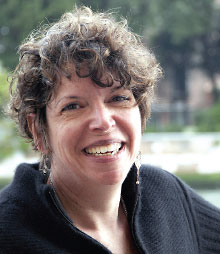Fewer than 20% of youth in the justice system who need mental health services receive them, either while in detention or in subsequent years, a
study in the
Journal of the American Academy of Child & Adolescent Psychiatry has found. The study, which followed participants until they reached a median age of 32 years, also revealed disparities in care based on race, sex, and type of mental disorder.
The findings have long-term implications for public mental health, lead author María José Luna, M.S., told Psychiatric News. Luna is a clinical psychology doctoral student in the Health Disparities and Public Policy Program in the Department of Psychiatry and Behavioral Sciences at Northwestern University Feinberg School of Medicine.
“Youth don’t just ‘age out’ of disorders. At least one-third of females and over half of males continue to have disorders as adults [and will continue to need care],” Luna said. “The public health, mental health, and criminal justice systems have a responsibility to ensure that youth with disorders don’t fall through the cracks.”
Luna and colleagues examined data from the Northwestern Juvenile Project, a longitudinal study of 1,829 youth who were randomly sampled from detention in Chicago in 1995. Participants included 1,172 males and 657 females, all of whom were enrolled in the study when they were between the ages of 10 and 18 years.
The researchers interviewed the participants at the detention center within two days of each participant’s arrival. They then re-interviewed the participants up to 13 times through 2015, whether the participants were in the community or in correctional facilities. The researchers assessed the participants for mental health disorders using structured diagnostic interviews and assessed the participants’ service use using the Child and Adolescent Service Assessment and the Services Assessment for Children and Adolescents.
At any given time point, only between 6.3% and 11.4% of males and 8.5% and 18.1% of females with any disorder received mental health services. Female participants with any disorder had 1.82 times the odds of receiving mental health services compared with male participants.
“From the literature, we know that male individuals are less likely to seek out services and may experience more barriers to care than female individuals,” Luna said.
“We anticipated finding this sex difference. There are far fewer female youth in the juvenile justice system,” said senior author Linda A. Teplin, Ph.D. She is vice chair of research, director of the Health Disparities and Public Policy Program, and the Owen L. Coon Professor of Psychiatry and Behavioral Sciences at Northwestern University Feinberg School of Medicine. “Yet, in the last decades, more services geared toward female youth have been implemented, which may have bumped up the level of service provision for them.”
Compared with Black participants with any disorder, non-Latinx White and Latinx participants had 2.14 and 1.50 times the odds of receiving services, respectively—a result that Teplin feels speaks to the interplay between systemic racism and disparities in socioeconomic status.
“Let’s remember who gets into the system: disproportionately minority youth from socioeconomically impoverished backgrounds,” said Teplin.
Disorder Matters
The odds of participants receiving mental health services varied depending on the type of disorder they had. Compared with participants with a substance use disorder (SUD), male and female participants with an internalizing disorder had 2.26 times and 2.43 times the odds of receiving services. Males with a disruptive behavior disorder had 2.01 times the odds of receiving services compared with those with an SUD, but there were no significant differences among females with those disorders. Females with an internalizing disorder had 1.97 times the odds of receiving services compared with those with a disruptive behavior disorder, but there were no significant differences among males with those disorders.
Luna said that one reason for these differences is that many programs do not have adequate resources to meet the needs of youth with disruptive behavior disorders or SUDs.
“Treatment for disruptive behavior disorders and SUDs can be time-consuming and often requires multidisciplinary care,” Luna said, adding that there needs to be ongoing clinical and programmatic support to prevent burnout in mental health professionals who work with youth with these disorders.
“Also, like all human beings, clinicians—including well-intentioned ones—have biases,” Luna said. “Studies have documented the stigma that many clinicians have toward those with disruptive behavior disorders or SUDs. We need to improve training programs to help clinicians address their implicit and explicit biases and to consider the context in which these disorders often develop.”
“This is not to slam agencies,” said Teplin. “They’re often underfunded, and kids in detention are only there for a brief time, so it’s not the ideal setting to provide mental health services.” She added that the youth then return to their communities, which also may not have the resources to provide services.
Luna said that mental health professionals should be aware that many youth struggle to engage in services because they do not trust “the system.”
“One way to build trust, especially with youth of color, is for clinicians to acknowledge and have compassion for the difficulties that most youth in the justice system experience. Racial discrimination, systemic oppression, poverty, and trauma—including trauma experienced in the justice system—all have a negative impact on adolescents’ mental health,” Luna said. “It can be very powerful when a clinician validates an adolescent’s experiences with these sociopolitical factors that are beyond the adolescent’s control. This builds trust and creates a safe space for youth to continue to engage in services.”
This study was supported in part by the National Institutes of Health, the Office of Juvenile Justice and Delinquency Prevention, The William T. Grant Foundation, and The Robert Wood Johnson Foundation. A complete list of funding sources is available in the online version of the study. ■


